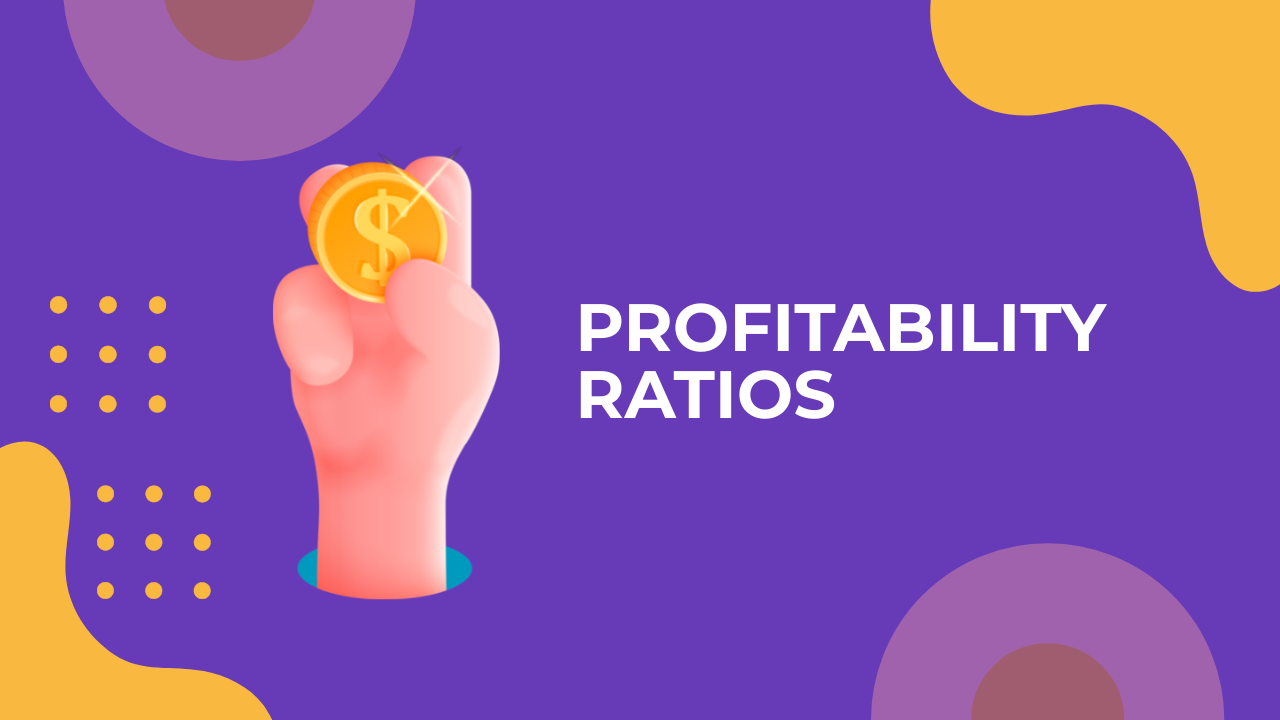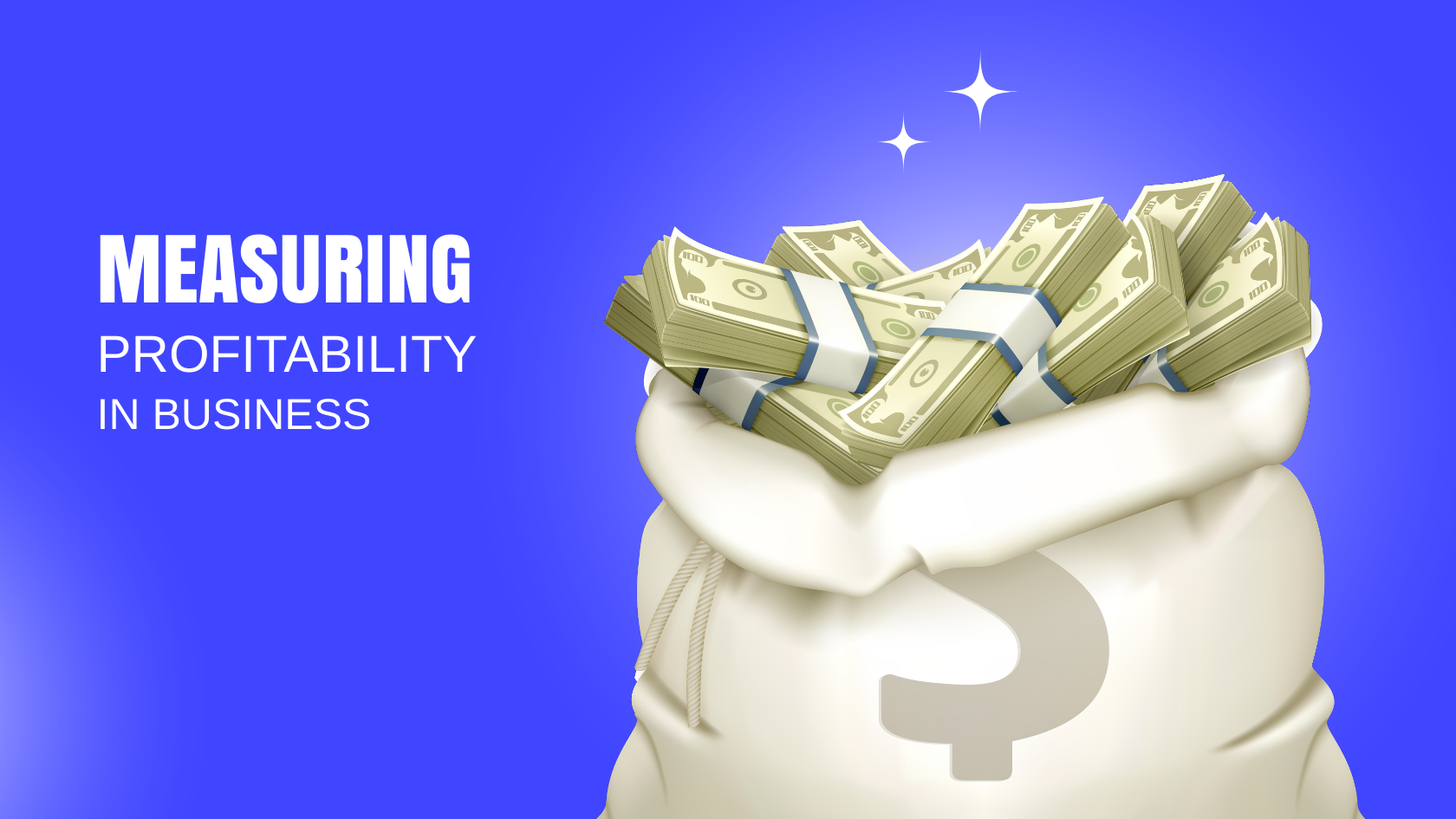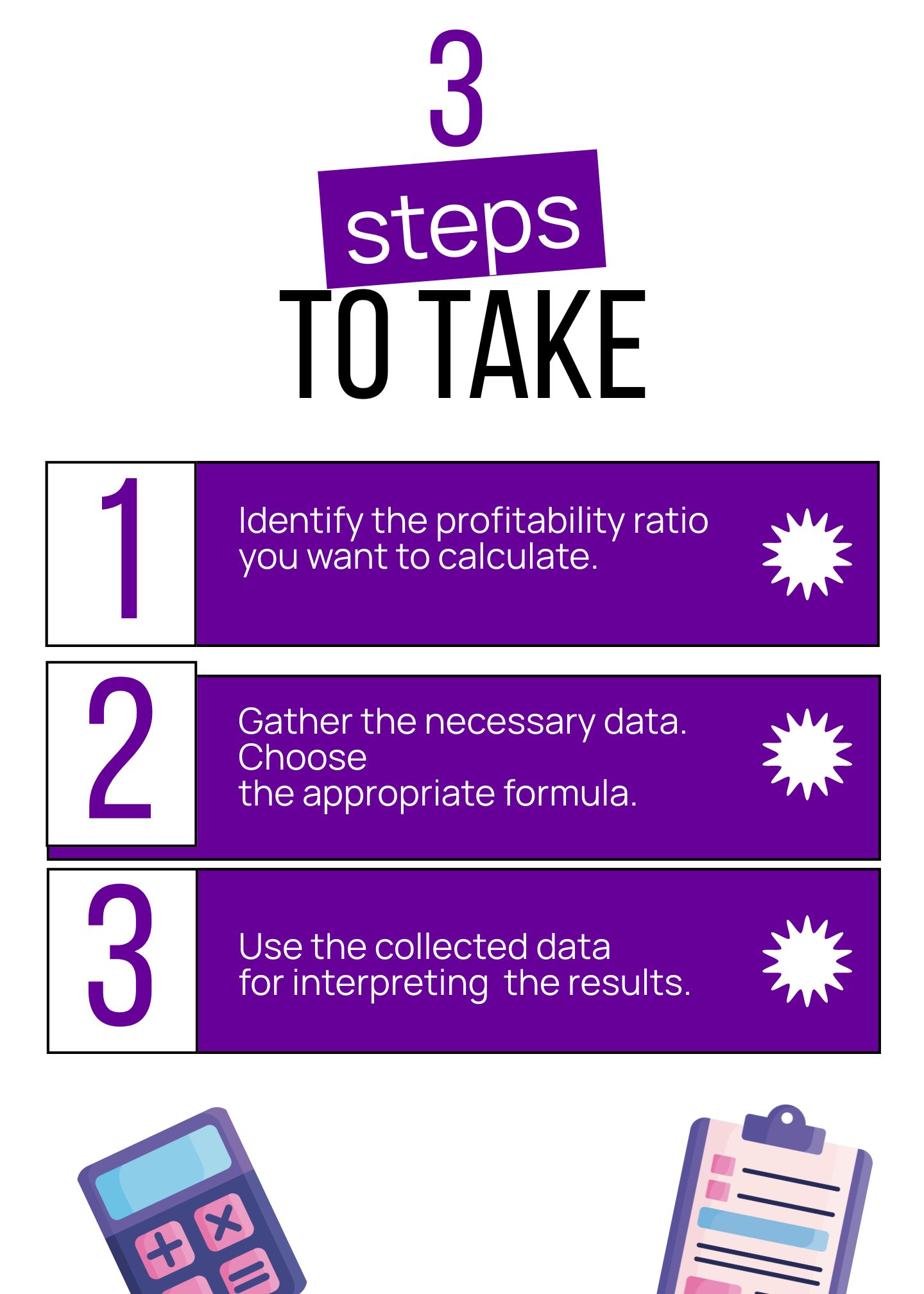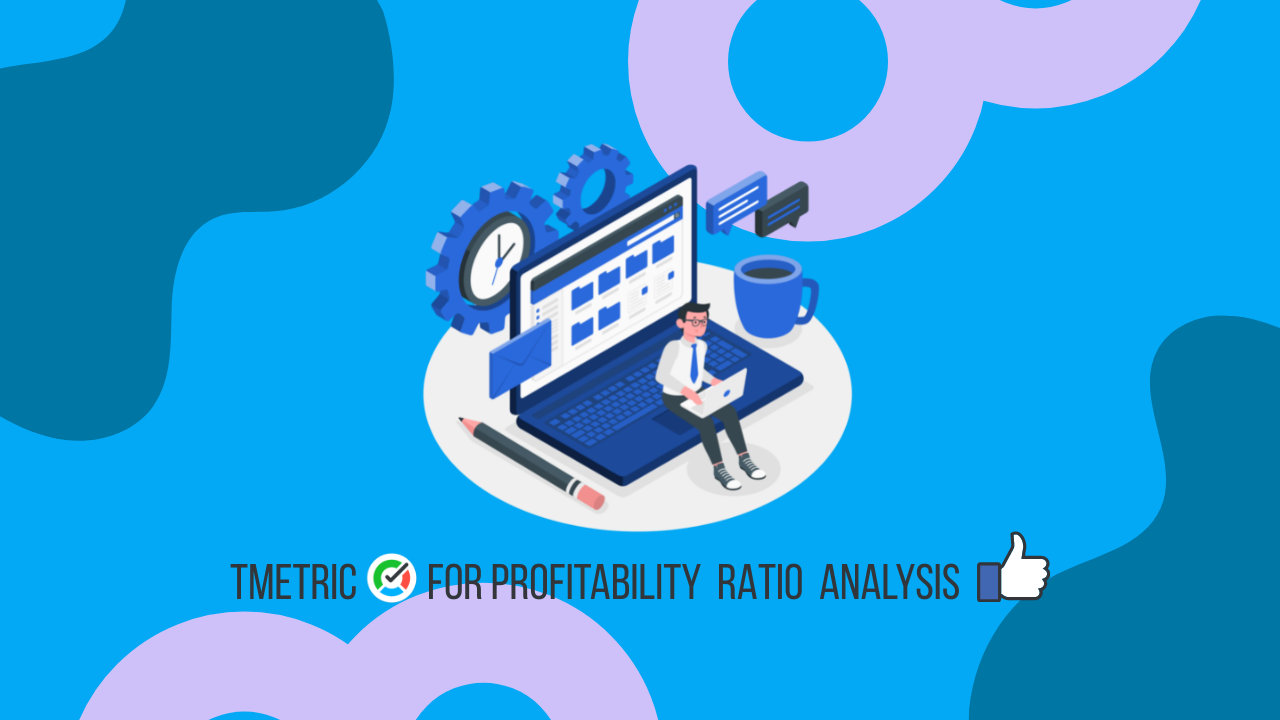The Best 7 Ways How to Read and Use Profitability Ratios in Business
Understanding and utilizing profitability ratios is crucial for assessing the financial health of your business. Discover the best 7 ways to read and use profitability ratios effectively in your decision-making process.

Sustainable growth requires more than just making money – it needs a compass to guide the way. That compass is profitability.
Profitability Ratios: The Secret Ingredient to Successful Financial Analysis
Unlike 'profit', which is a snapshot of earnings at a single point in time, the profitability ratios definition allows for capturing a bigger picture.
Simply put, it's a scorecard of financial metrics that measure a company's ability to generate earnings compared to its expenses and assets.

What is the Meaning of Profitability Ratios?
As financial indicators, profitability ratios help assess business capacity to produce income and profit from its operations. Without profitability ratios analysis, we cannot evaluate a company's financial health, identify areas for improvement, or track progress over time.
Profitability ratios embrace margins and returns and clarify the state of a company's efficiency by comparing:
- revenue
- operating expenses
- assets
- shareholder equity.
Generally, higher profitability ratios suggest better financial performance and an ability to convert revenue into profit effectively.
Why Are Profitability Ratios Important?
Profitability ratios examples readily demonstrate a company's aptitude for converting sales into excess funds, offering pertinent information to various stakeholders, including:
- investors
- employees
- leadership and management teams.
Investors pay close attention to these metrics because they indicate a robust business model and well-run operations.
Employees also stand to gain from working at a profitable company, with better job security and opportunities for advancement.
Management cannot expect high performance without considering profitability ratios, especially when developing long-term plans.
The Multifaceted Role of Profitability Ratios in Business Strategy and Operations
Measuring profitability in business is like balancing a scale⚖️ – you need the right combination of elements to make it even.
Measuring profitability is not merely an accounting requirement but an imperative strategic tool for business excellence due to its impact on business operations and long-term planning.
Profitability ratios' influencing role is essential in various contexts.
Resource Management
The measurement of profitability plays a significant role in guiding a business's resource allocation decisions. By analyzing which products or services generate higher profits, companies often allocate more resources toward these areas while cutting back on less profitable ones.
Consequently, this affects crucial aspects such as hiring, advertising, and R&D. It makes profitability metrics a key driver of resource allocation and strategic decision-making.
Stakeholder Relations
Profitability is one of the key metrics that investors look at when deciding whether to invest in a company.
A profitable company is more likely to offer dividends and show capital appreciation, making it an attractive investment.
Transparency about profitability also builds trust between the company and its investors, helping to attract more capital for expansion and other endeavors.
Operational Efficiency
Measuring profitability can reveal inefficiencies in business processes. For example, if margins are shrinking, this could signal increased production costs or a decline in sales.
Recognizing these trends early allows management to take corrective action to improve profitability, like renegotiating with suppliers or adjusting pricing strategies.
Employee Engagement, Salary and Benefits
A profitable company has the advantage of being able to provide competitive compensation packages to its employees, leading to increased job satisfaction and productivity.
Additionally, profitable firms can easily justify pay raises and benefit improvements, giving them an upper hand in recruiting and keeping top performers.
Business Durability
Long-term profitability determines a business's ability to endure economic challenges and maintain stability.
Firms without consistent earnings may:
- deplete their funds
- struggle with bills
- fail an unexpected competition
- confront insolvency.
To avoid these worst-case scenarios and improve risk management, monitoring profitability is vital for ensuring a business remains viable over time.

🔍The Net Result: What do profitability ratios measure, and How are profitability ratios used?
Profitability ratios are used to measure a company's ability to generate profits relative to its revenue, assets, or equity with quantitative metrics that allow:
- tracking processes in sales, marketing, and operations
- assessing the performance of the business.
When assessing a company's financial wellbeing, it's essential to look beyond just the bottom line (profit) and consider its ability to consistently generate substantial returns using the profitability ratios formula.
Steps to Calculate Profitability Ratio: A Look at the Formula

- Identify the profitability ratio you want to calculate. There are many different profitability ratios, each with its own formula.
- Gather the necessary data and start calculations. You must gather the company's income and balance sheet data to calculate a profitability ratio. The specific data you need will vary depending on the profitability ratio you are calculating. Now, you can calculate the profitability ratio using the appropriate formulas described below.
- Interpret the results. Once you get the results, you can interpret them to assess the company's profitability precisely. For example, a high gross profit margin indicates that the company is good at generating profits from its sales. A low net profit margin indicates that the company is incurring many expenses, reducing its profits.
The formula for Profitability Ratio
Let's say we want to calculate the gross profit margin for a company. The company's income statement shows that its net sales for the year were $10 million, and its gross profit was $5 million.
To calculate the gross profit margin, we would use the following formula:
Gross profit margin = (Gross profit / Net sales) * 100
Substituting the data from the income statement, we get:
Gross profit margin = ($5 million / $10 million) * 100 = 50%
This means the company earns 50 cents in gross profit for every dollar of net sales.
Below, we will explore seven standard profitability ratios, tell how to read them, and illustrate their role with real examples.
Understand the different types of profitability ratios. There are many different types of profitability ratios, each of which measures a different aspect of a business's profitability.
Gross Margin Ratio
🔖The difference between revenue and the cost of goods sold.
This measures the profitability of each unit of product or service sold. It is calculated by deducting the cost of goods sold (COGS) from revenue and dividing the result by revenue.
🧮Gross Margin Ratio = (Revenue - Cost of Goods Sold) / Revenue
This ratio measures the percentage of revenue left after deducting the cost of goods sold (COGS). It directly reflects the efficiency of production and pricing strategies.
Gross Margin Ratio Fact Box
Role in the Dot-Com Bubble: During the dot-com bubble of the late 1990s, Gross Profit Margins were often overlooked in favor of metrics like user growth, which led to inflated valuations and, eventually, the bubble burst.
Industry Variation: Gross Profit Margin can vary significantly by industry. For example, software companies often have incredibly high gross margins, sometimes exceeding 90%, while retailers might have much slimmer margins, often below 20%.
Berkshire Hathaway’s Investment Strategy: Warren Buffett, one of the most successful investors of all time, often pays close attention to Gross Profit Margin as a key indicator of a business's "moat" or competitive advantage.
Net Profit Margin
🔖The difference between revenue and all expenses.
It helps investors understand how well a company can convert sales into profits before other expenses are factored in.
🧮Net Margin Ratio = Net Income / Total Revenue
The net profit margin indicates the percentage of revenue left after deducting all expenses, including COGS, operating expenses, taxes, and interest. It reflects the overall profitability of a business. A higher net profit margin indicates better cost management and higher profitability.
Net Profit Margin Fact Box
Global Variations: Factors like labor costs, taxation, and business regulations cause Net Profit Margins to vary considerably from country to country, even for similar businesses.
Inverse Relationship with R&D: Companies in sectors like technology and pharmaceuticals often show an inverse relationship between R&D spending and Net Profit Margin, as significant investments in innovation may initially lower profitability.
Role in the Financial Crisis of 2008: Declining Net Profit Margins in sectors like housing and banking were early indicators of the financial instability that culminated in the 2008 crisis.
Return on Investment (ROI)
🔖 The ratio of net profit to total investment.
It is calculated by dividing the net profit from an investment by the total investment cost, then multiplying the result by 100 to express it as a percentage.
🧮 ROI = (Net Income - Total Investment) / Total Investment
ROI measures the profitability of an investment and indicates how effectively a business generates profits compared to the investment made. To get precision in calculating ROI, businesses may apply time tracking to identify areas where they may be spending too much time and make adjustments to improve efficiency.
ROI Fact Box
The Vanderbilt Case: In the 19th century, Cornelius Vanderbilt switched his investments from shipping to railroads, a decision attributed mainly to his understanding of ROI. His astute calculations helped him become one of the wealthiest Americans of his time.
NASA's ROI: The Apollo program is often cited as delivering an exceptional ROI regarding technological advancements and the value of international prestige and national security. Although hard to quantify, these returns have been subject to much debate but remain a fascinating aspect of ROI.
Return on Assets (ROA)
🔖ROA evaluates how effectively a company uses its assets to generate profit.
🧮 ROA = Net Income / Total Assets
A higher ROA signifies better asset management and more robust profitability.
By examining ROA, stakeholders can get a comparative measure of a company's efficiency and financial performance.
ROA Fact Box
Popularization by Academia: Scholars like Peter Drucker have emphasized the importance of asset utilization as a measure of managerial effectiveness. Academic papers and case studies throughout the latter half of the 20th century strengthened ROA's position as a key performance indicator.
Turnaround at Chrysler: In the 1980s, Lee Iacocca led a remarkable turnaround at Chrysler, where a focus on improving ROA played a significant role. The decision to invest in minivans—an asset-light operation—boosted ROA and helped save the company.
Return on Equity (ROE)
🔖 ROE measures the profitability from the perspective of shareholders.
It is calculated by dividing net income by shareholder's equity. A higher ROE indicates better profitability.
🧮 ROE = Net Income / Total Equity
A higher ROE implies better profitability and efficient utilization of shareholder equity. ROE can be used to compare companies in the same industry.
It provides insight into how efficiently a business converts revenue into excess funds, which can be used for various purposes, such as investing in growth, paying dividends, or reducing debt.
ROE Fact Box
Berkshire Hathaway: Warren Buffett has often emphasized ROE as a crucial indicator of a company's ability to generate value. Berkshire Hathaway has consistently demonstrated high ROE, making it a study model for investment.
Enron Scandal: The Enron scandal serves as a cautionary tale. Despite showing high ROE numbers, the company was engaged in accounting fraud. This highlights that ROE alone does not guarantee ethical or practical viability.
Earnings Before Interest, Taxes, Depreciation, and Amortization (EBITDA) Margin
🔖 The evaluation of the ability to generate earnings from business core operations.
🧮 EBITDA = Earnings Before Interest, Taxes, Depreciation, and Amortization / Total Revenue
The EBITDA margin measures a company's profitability by excluding non-operating expenses. It helps evaluate a business's operational efficiency and cash flow generation.
This metric is popular because it excludes non-cash items such as depreciation and amortization, which are typically heavily influenced by accounting and tax strategies.
EBITDA Fact Box
John Malone's Influence: John Malone, the famed American business magnate, was one of the early advocates of using EBITDA in the cable industry. His focus on the metric made it more acceptable for assessing the profitability and health of businesses.
IFRS and GAAP: While EBITDA is not officially recognized in Generally Accepted Accounting Principles (GAAP) or International Financial Reporting Standards (IFRS), these accounting frameworks have impacted how EBITDA is calculated, especially regarding items like restructuring costs or gains/losses from asset sales.
Earnings per Share (EPS) Ratio
🔖EPS shows how much profit a company generates for each share of its stock.
🧮 EPS = (Net Income - Preferred Dividends) / Weighted Average Shares Outstanding
Net income is the total profit of a company after all expenses have been paid, including taxes.
Preferred dividends are payments made to holders of preferred stock.
Weighted average shares outstanding is the average number of common shares outstanding during a specific period. This considers any changes in the number of shares outstanding during the period, such as stock splits or buybacks.
Investors closely monitor this indicator because it reveals how much profit each share produces. The higher EPS indicates a higher P/E ratio and a higher stock price.
EPS Fact Box
Investment in Coca-Cola: In 1987, Buffett bought a large stake in Coca-Cola. Coca-Cola had an EPS ratio of over 20 and a price-to-earnings ratio of under 10. Buffett believed that the stock was undervalued based on its EPS ratio.
Buffett's investment in Coca-Cola turned out to be very profitable. The stock has increased in value by over 100-fold since he bought it.
What Makes TMetric the Essential Tool for Profitability Ratio Analysis

TMetric empowers businesses to reach new heights of profitability by providing a comprehensive platform to track employee work hours, monitor project expenses, and analyze productivity trends.
Step-by-Step Utilization
Data Integration: TMetric collects employee work hours, billing, and productivity data. These can be integrated with financial metrics to calculate profitability ratios.
Customization: TMetric allows for customization in its analytics, providing room for specialized profitability ratio analysis depending on the industry in question.
Real-Time Analysis: TMetric's real-time tracking capabilities can offer businesses immediate insights into their performance metrics, enabling quick, data-driven decisions to optimize profitability ratios.
Benchmarking: By using TMetric, businesses can compare their profitability ratios against industry benchmarks or historical data to identify areas for improvement.
With this data at their fingertips, companies can make data-driven decisions to optimize project resource allocation, boost efficiency in any work mode, and ultimately drive revenue.
Parting Thought

Measuring profitability is not just a matter of crunching numbers. It's an essential window into the health of businesses and the broader economy.
Understanding these concepts can help investors, policymakers, and other stakeholders make informed decisions.
Different industries require aligning with the business's goals and operating on different metrics for the accuracy of the assessment.
You can start by choosing from the relevant methods we list above and leveraging TMetric time tracking to assess business wellbeing and forecast project profitability with success.

